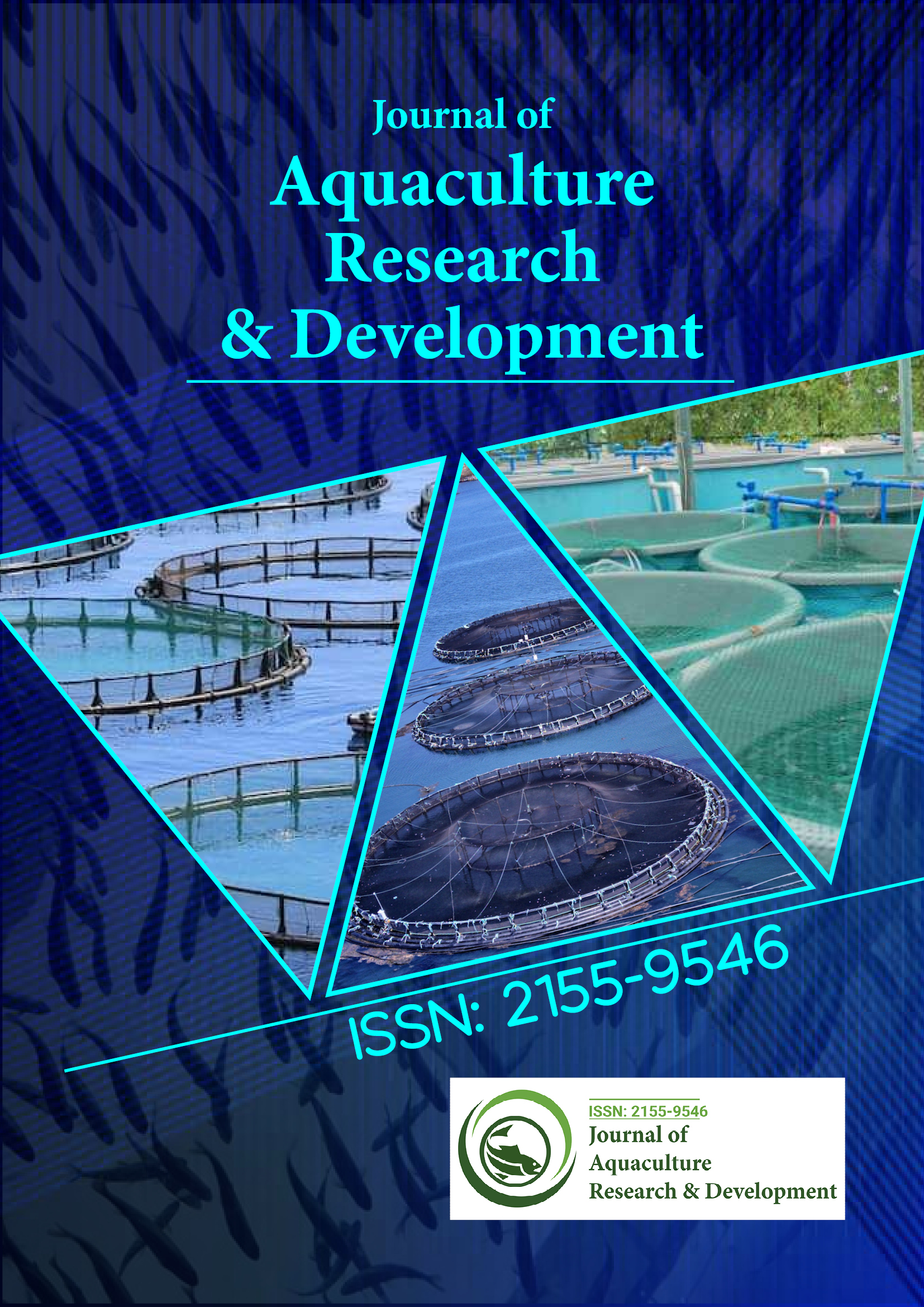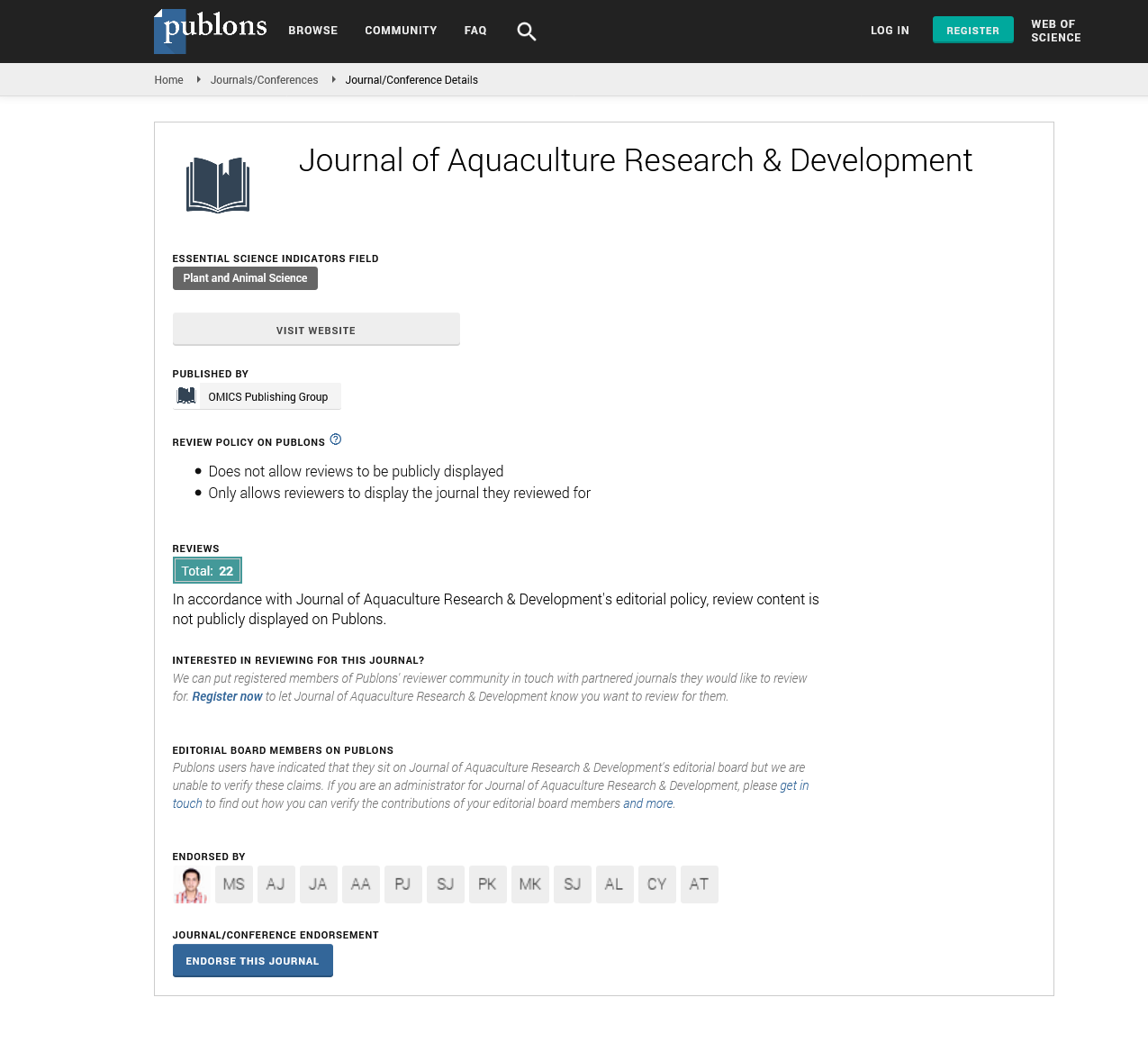Indexed In
- Online Access to Research in the Environment (OARE)
- Open J Gate
- Genamics JournalSeek
- JournalTOCs
- Scimago
- Ulrich's Periodicals Directory
- Access to Global Online Research in Agriculture (AGORA)
- Electronic Journals Library
- Centre for Agriculture and Biosciences International (CABI)
- RefSeek
- Directory of Research Journal Indexing (DRJI)
- Hamdard University
- EBSCO A-Z
- OCLC- WorldCat
- Scholarsteer
- SWB online catalog
- Virtual Library of Biology (vifabio)
- Publons
- MIAR
- University Grants Commission
- Euro Pub
- Google Scholar
Useful Links
Share This Page
Journal Flyer

Open Access Journals
- Agri and Aquaculture
- Biochemistry
- Bioinformatics & Systems Biology
- Business & Management
- Chemistry
- Clinical Sciences
- Engineering
- Food & Nutrition
- General Science
- Genetics & Molecular Biology
- Immunology & Microbiology
- Medical Sciences
- Neuroscience & Psychology
- Nursing & Health Care
- Pharmaceutical Sciences
Commentary - (2024) Volume 15, Issue 12
Strategies for Sustainable Development and Climate-Smart Aquaculture
Haque Raza*Received: 27-Nov-2024, Manuscript No. JARD-24-27741; Editor assigned: 29-Nov-2024, Pre QC No. JARD-24-27741 (PQ); Reviewed: 13-Dec-2024, QC No. JARD-24-27741; Revised: 20-Dec-2024, Manuscript No. JARD-24-27741 (R); Published: 27-Dec-2024, DOI: 10.35248/2155-9546.24.15.943
Description
The impacts of climate change are being felt across all sectors, including aquaculture. Climate-Smart Aquaculture (CSA) offers an approach to manage aquaculture sustainably while addressing the challenges posed by climate variability and environmental degradation. This concept emphasizes adaptation, mitigation and resilience-building in aquaculture practices to ensure the long-term viability of aquatic food production systems. The following article delves into the principles, practices and innovations that define climate-smart aquaculture, as well as its benefits and challenges.
Ensuring consistent and increased production of aquatic organisms to meet growing global demand for seafood. Implementing measures to reduce vulnerability and enhance the adaptive capacity of aquaculture systems. Minimizing greenhouse gas emissions and other environmental impacts associated with aquaculture. These objectives guide the development of practices and technologies that help aquaculture systems cope with climatic shifts and contribute positively to environmental sustainability.
A variety of practices have been identified to align aquaculture systems with climate-smart principles. Integrated Multi-Trophic Aquaculture (IMTA) combines species from different trophic levels, such as fish, mollusks and seaweed, in a single system. This practice promotes nutrient recycling, reduces waste and enhances ecosystem balance. Recirculating Aquaculture Systems (RAS) are closed-loop systems that recycle water, allowing for controlled conditions and reduced water usage. These systems are particularly beneficial in regions facing water scarcity and erratic climate conditions. This method involves cultivating beneficial microorganisms in aquaculture systems to manage waste and improve water quality. The biofloc also serves as a supplementary feed source, reducing dependency on external feed inputs. Transitioning to renewable energy sources, such as solar or wind power, in aquaculture operations reduces carbon emissions and operational costs. These energy sources are especially valuable in remote areas. Selecting and cultivating species that are more tolerant of fluctuating temperatures, salinity and oxygen levels can ensure the stability of aquaculture systems under changing climatic conditions. This approach considers the broader ecosystem in which aquaculture operates. It involves protecting natural habitats, maintaining biodiversity and using aquaculture systems that mimic natural processes to enhance resilience. Reducing feed waste by using precise feeding methods and high-quality, sustainably sourced feed minimizes nutrient loading in water bodies and lowers production costs. Establishing vegetative buffers and constructed wetlands around aquaculture farms can filter runoff, reduce nutrient loading and protect surrounding ecosystems from pollution.
The Internet of Things (IoT) enables real-time monitoring of aquaculture systems through sensors that measure water temperature, pH, dissolved oxygen and other critical parameters. This data facilitates timely interventions and optimizes resource use. Artificial Intelligence (AI) and Machine Learning (ML) can analyze large datasets to predict potential risks, optimize feeding schedules and improve disease management in aquaculture systems. Nanomaterials are being used to improve water quality by removing pollutants and enhancing filtration efficiency. These technologies are environmentally friendly and effective. Geographic Information Systems (GIS) tools help in site selection and risk assessment by analyzing geographic and climatic data. This ensures that aquaculture operations are established in locations best suited to withstand climate impacts. Combining aquaculture with hydroponics, aquaponics systems optimize water use and nutrient recycling. These systems are particularly beneficial in arid regions and urban settings. By increasing aquaculture productivity and resilience, CSA contributes to meeting the dietary needs of a growing global population. Climate-resilient practices reduce the vulnerability of aquaculture businesses to climate-related losses, ensuring stable incomes for farmers. CSA practices protect aquatic ecosystems by reducing waste, preserving biodiversity and mitigating pollution. Implementing energy-efficient and renewable energy solutions in aquaculture helps lower carbon footprints. Engaging local communities in climate-smart aquaculture initiatives fosters capacity building and equitable distribution of benefits.
Citation: Raza H (2024). Strategies for Sustainable Development and Climate-Smart Aquaculture. J Aquac Res Dev. 15:943.
Copyright: © 2024 Raza H. This is an open-access article distributed under the terms of the Creative Commons Attribution License, which permits unrestricted use, distribution, and reproduction in any medium, provided the original author and source are credited.

